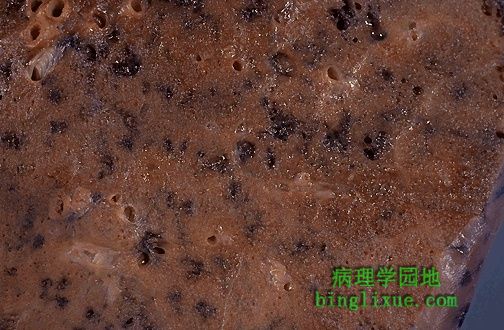

This is a more subtle appearance for centrilobular emphysema in which there are "dirty holes" that appear focally where the central portions of lung acini have lost lung parenchyma while collecting anthracotic pigment at the same time. This pattern is typical for smokers.
Smokers have a greater number of neutrophils and macrophages in their alveoli. Smoking irritates alveolar macrophages, which in turn release neutrophil chemotactic factors, such as interleukin 8, thus recruiting neutrophils. In addition, nicotine is chemotactic for neutrophils, and smoke can activate the alternative complement pathway (an inflammatory cascade). Proteases, particularly elastase, are secreted by these neutrophils and macrophages. Proteases are enzymes that are capable of digesting lung tissue and these chemicals are responsible for the damage seen in emphysema. Oxidants and free radicals in smoke also inhibit the alpha-1-antitrypsin circulating in the lung that protects alveoli from proteases. Chronic irritation by smoke also can lead to chronic bronchitis with excess production of mucus. Smoke interferes with the ciliary action of the respiratory epithelium and the mucus cannot be cleared. This predisposes the smoker to secondary and repeated infections.